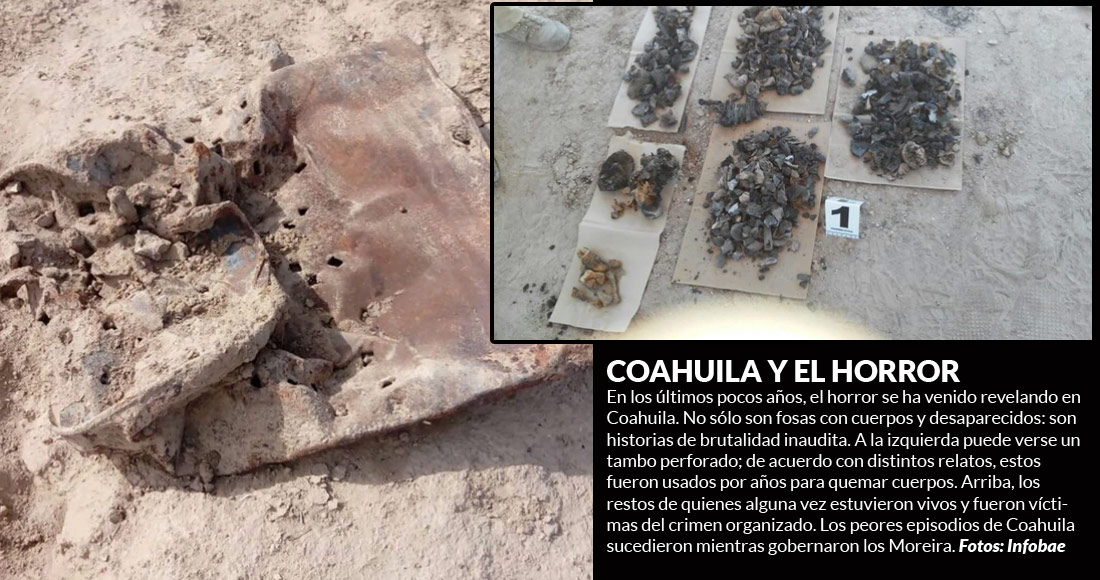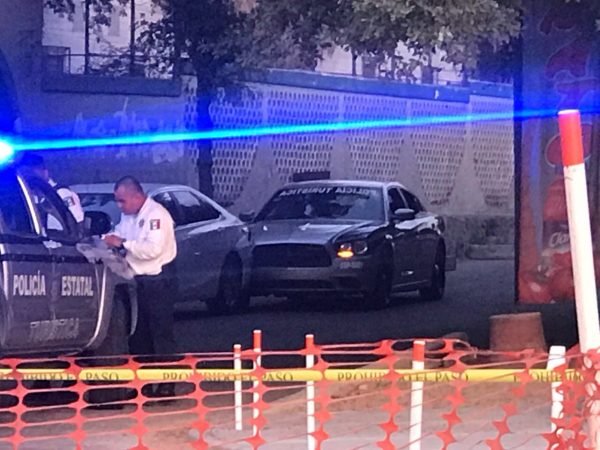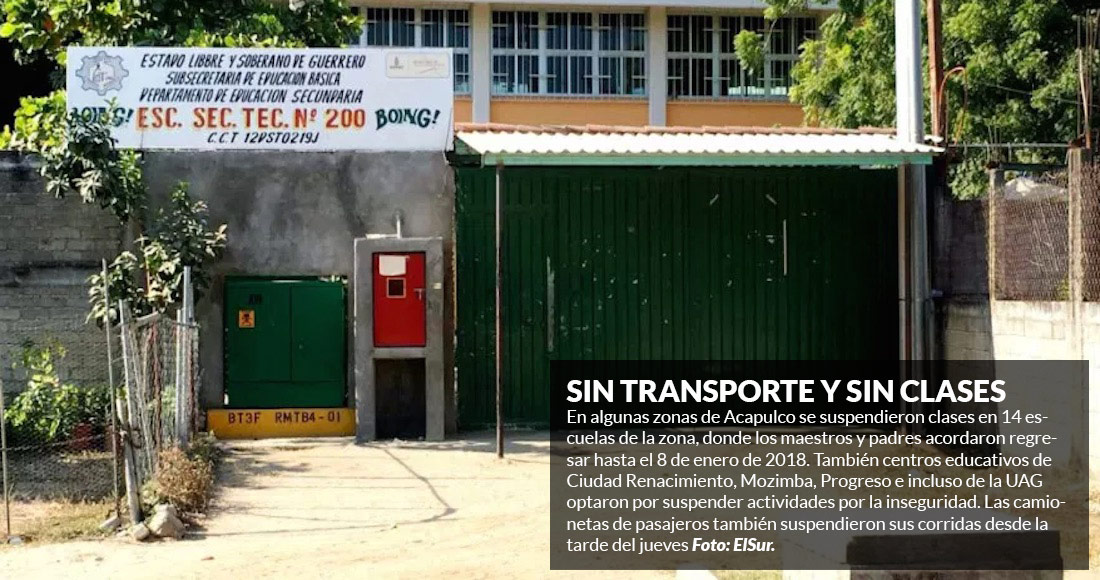Posted by Yaqui from: Daily Beast
Cartel hitmen Force "Confessions" From Victims Before ISIS-Style Beheadings in Mexico
By: Jeremy Kryt
Dec 3, 2017
In a separate incident on Tuesday of last week two more severed heads were found in a cooler at a television station in the nearby City of Guadalajara ( already reported here on BB). The heads were accompanied by a note signed by CJNG and addressed to a high ranking officer. Another "Cartel Cooler" was left at the federal courthouse building that same day, but officials refused to disclose the contents.
One recent, high-profile decapitation case involved the discovery of two heads—and fourteen additional dead bodies—in the popular resort area of Los Cabos, Baja California Sur, last June. In another incident, the freshly removed heads of two men and a woman were found inside decorative sombreros during the run-up to the nation’s Independence Day in Veracruz state.
Heads for Tales:
Officers Implicated?
“It should not be seen as a punishment,” he said, “but rather as a message to others.”
| TIERRA De La MUERTE |
By: Jeremy Kryt
Dec 3, 2017
One of at least three decapitations last week was caught on camera as cartel violence continues to soar. Members of the Viagras cartel videotaped a rival hitman confessing to “sins” in the western Mexican state of Michoacán last Thursday, then bent his neck backward over a block of wood and sawed off his head with a carving knife.
The beheading video was posted to social media, along with a warning to the Jalisco New Generation Cartel (CJNG). In the clip, the decapitated victim also claims to be the brother of Juan Carlos Márquez Pérez, a.k.a. “El Duende” (The Goblin), a CJNG operative arrested back in 2015.
Mexican mafiosos appear to have borrowed the practice of beheading their enemies from Middle Eastern terrorists such as Al Qaeda and the Islamic State (ISIS). Decapitations in Mexico have risen dramatically over the last several years due to their perceived shock factor. Head cutting has become the signature move for crime groups looking to intimidate opposing factions, pressure law enforcement, and cow local citizens.
| Alleged CJNG Hitmen / Assassins |
Mexican mafiosos appear to have borrowed the practice of beheading their enemies from Middle Eastern terrorists such as Al Qaeda and the Islamic State (ISIS). Decapitations in Mexico have risen dramatically over the last several years due to their perceived shock factor. Head cutting has become the signature move for crime groups looking to intimidate opposing factions, pressure law enforcement, and cow local citizens.
There have been dozens of beheadings by the cartels in 2017, which is on pace to be the bloodiest year in the country’s decade-long Drug War. (October, the latest month for which there are statistics, saw the homicide rate rise to an average of almost 90 murders per day.)
| Arroyo El Thule near San Jose del Cabo, BCS "Cartel Cooler" and Clandestine Burials |
Heads for Tales:
Last week’s brutal decollation video was filmed in the scorching valley called Tierra Caliente (The Hot Lands). Located smack in the middle of the troubled state of Michoacán, the Hot Lands are claimed by both the home-grown Viagras cartel and the invading CJNG from neighboring Jalisco state.
The valley and surrounding mountains are home to large-scale drug production and shipping zones, and the local timber and mining industries provide lucrative sources for extortion, making Tierra Caliente a prize worth fighting over for both crime syndicates.
In a 2016 interview Viagras leader Nicolás “El Gordo” (The Fat One) Sierra admitted his outfit was “fighting a crusade” against the CJNG, which is now reported to be Mexico’s largest cartel. According to experts, the recent video segment could indicate the gang from Jalisco might have "El Gordo"Sierra and his sicarios (hitmen) on the ropes.“This execution video is definitely out of character for the Viagras and appears to be an escalation in their use of violence [against] the CJNG cartel,” said security analyst Robert Bunker, who teaches at the U.S. Army War College, in an interview.
“A safe guess would be that their fight with CJNG may not be going well and they see the need to ‘ramp up the terror’ against that group in order to better protect their territories and illicit interests,” Bunker said.
Gustavo Fondevila, a professor who specializes in organized crime at Mexico City’s Center for Economic Research and Teaching, said such “trophy killings” are often aimed at controlling the black-market economy.
“Beheading captured members of a rival cartel has a direct effect on the black market,” said Fondevila, who went on to call decapitation a “technique of conquest” aimed at a given geographic region.
“The rationale of the beheadings, abuse, and torture [ . . .] is to persuade the other cartel to leave a place, give up, or surrender without using weapons. It’s a relatively inexpensive way to win and take the market.”
The method used to decollate the CJNG footsoldier in the Viagras’ video post, and the way it was filmed, combine to tell a menacing tale about the motive and mindset of those involved.
“Beheadings where the victim is kneeling or thrown on the ground with the head lifted up to expose the neck and then beheaded beginning with a throat cut are a visceral and bloody type of execution,” said Bunker, author of the book Narcoterrorism and Impunity in the Americas.
“They really portray a sense of the victim’s heightened terror to the viewing audience as the terrorist or cartel enforcer begins working on them with a large knife,” Bunker said. “A shooting or stabbing execution just doesn’t have the same horror.”
| Book Cover Photo: Narcoterrorism and Impunity in the Americas A Small Wars Journal BY: Robert J.Bunker and John P. Sullivan |
Officers Implicated?
In case anyone missed the point of the multiple head-lopping demonstrations that occurred in western Mexico last week, the respective killers also included textual aids, ie narco mantas/messages.
A crawl along the bottom of the Tierra Caliente video specifically addresses the CJNG and its leader, Rubén “El Mencho” Cervantes, for whose capture the U.S. Justice Department is currently offering a six million dollar reward.
“Featherless chickens,” the message reads in part, “If you want to interfere here you will end up like this beheaded victim. This plaza (drug trafficking zone) has an owner. Michoacán is ours.”
Another individual mentioned by name in the video’s subtitles is former state police officer Pepe Méndez. After admitting on camera to killing and dismembering two people, the captive Marquéz brother (whose first name has not yet been released) says he and his cartel cohorts received financial support from Officer Pepe Méndez, who is now serving time for narcotics trafficking.
The soon-to-be-headless CJNG hitman also claims to have conspired with a “militar”,ie soldier, with the 43rd Battalion of the Mexican Army, currently stationed in the nearby market town of Apatzingán.
The heads delivered to the broadcasting center in Guadalajara also came with written hints that pointed to collusion between organized crime and security forces. The note found with the cooler was addressed to Jesús Humberto Boruel Neri, the Inspector General of the Jalisco police, and was intended as an open warning, according to the Mexican newspaper El Proceso.
“You know that the deals are to be fulfilled or you must want us to remind you why you are in this role and who put you there,” read the message from the CJNG.
“Mexican security personnel cooperating with the cartels is nothing new—it has literally been going on for over a decade now and is pretty much due to human greed,” said Bunker.
“This is one of the dilemmas faced by the Mexican government,” he added. Security forces “have in the past been known to provide information to the cartels, allow drug loads to pass through and even provide security for them, and handed over prisoners belonging to one cartel to an opposing one for execution purposes.”
The heightened frequency of cartel execution via head-chopping is no coincidence. Fragmentation of established cartels has caused conflict between newer crime groups to grow ever more ferocious. Warring capos have in turn come to rely on decapitation as a tool of psychological warfare aimed at breaking the will of their opponents.
“The beheading technique is quite similar to ISIS and has a long tradition in military combat as a strategy to terrorize the enemy,” said analyst Fondevila, who explained that the humbling admissions of guilt wrung from the hitman Márquez as he was brought to the block were likely just for show.
“It should not be seen as a punishment,” he said, “but rather as a message to others.”
How that message will be received by rival cartels, or by the superiors of those officials accused of colluding with them, is anybody’s guess.




















































